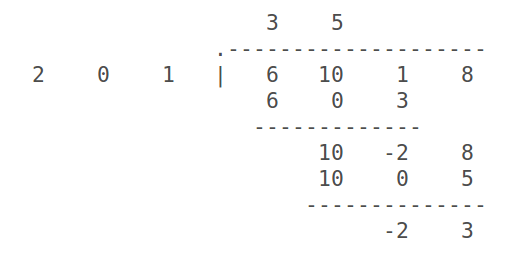How do you divide #( 6x^3 + 10x^2 + x + 8)/(2x^2 + 1)#?
1 Answer
Long divide the coefficients to find quotient
Explanation:
I like to long divide the coefficients like this:

...not forgetting to include a
In this example we find the quotient is
The process is similar to long division of numbers:
Write the dividend (
Write the divisor (
Start writing the quotient, term by term, choosing each successive term to match the leading term of the running remainder:
The first term of the quotient is
We then write out the product
We choose the next term of the quotient
We then write out the produce
There are no more terms to bring down from the dividend, so this is our final remainder.
Then interpret the coefficient sequences by applying them to the appropriate powers of
#(6x^3+10x^2+x+8)/(2x^2+1) = 3x+5+(-2x+3)/(2x^2+1)#
Or if you prefer:
#6x^3+10x^2+x+8 = (3x+5)(2x^2+1)+(-2x+3)#

